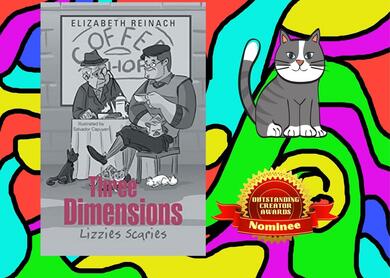|
Score: N/A
This book is... a thing that happened. Remember when we reviewed “Wakan Tanka” by Dr. John Bennett and said “WOW?” Well, we read this book and said, “WHY?!” Oh, my gosh, why? Why would you write about THAT? Of all things. There are probably as many things to write about as there are stars in the visible universe, and of all the things the author could've written about, they chose to write about incest?! And not just incest but incest between a grandmother and her grandson?! WHY?! What grandkid is like, “Am I about to be seduced by an eighty-year old woman?” (ACTUAL QUOTE). Should we... call someone? Is Chris Hansen available? Maybe John Walsh? What the hell? And speaking of hell, there is yet another story about deciding whether or not someone is in hell. What is with the author's fixation with this trope? Did some Catholic nun or Shaolin monk powerbomb them through three flaming tables with barbed wire and thumbtacks whenever they misbehaved as a child? If so, please do tell the authorities because we as decent human beings don't want them near another child again! Please know that most religious people don't wanna slice foreheads open with pizza cutters and break LED light tubes over their backs. Most religious people are... people. The author is critical of religion. We got it the first time we read it in Lizzies Frizzies. We get it. Fine, we'll play. Religious people can be jerks and hypocrites or even homicidal maniacs as much as the rest of human kind. But what sane, decent human being in 2022 is sitting around the house thinking, “She/he must be in hell.” No Christian, Jew, Muslim, Hindu, or Buddhist that we know of is sitting in their home on a daily basis with a Book of Life or Book of the Dead saying, “This person needs to go to hell, I need to make sure of it.” Scratch that, there are people who do that. They're called cultists, terrorists, and extremists. The majority of religious people are not wishing death and damnation on their fellow human beings, in fact the opposite is true. You can say it's satire. You can say it's supposed to be an exaggeration, but it's a misrepresentation of most modern religious people, the same people who run orphanages and charities around the globe and try to teach things like love and compassion. And the bashing just never ends, it continues into “Heirs of Deceit” by the same author. We'll more than likely see it in “Three Dimensions: Lizzies Mysteries.” Another thing that rears its ugly head again is race. Once again, if you're not going to handle the topic with care and respect, then don't handle it at all. Don't even touch it with a ten-foot pole. It's so brief, but there is an incredibly cringe-worthy quote describing girls who are unattractive yet put in a role usually intended for attractive people. It reads “A lot of them didn't look like model-girl types; they were small, fat, mousy. Later on she brought mainly black girls.” Look, let's give the author the benefit of the doubt and assume they meant to separate the adjectives with negative connotations (small, fat, mousy) from the state of being black, but the fact remains it reads terribly. The implication many readers will make from this is almost unspeakable. What group of creative writers looked at this and thought it was ok? Did they just skim it, see that the comic sans font was glamorous AF, and decided they wanted to get home to their Dr. Pepper and personal pan pizzas instead of dirtying the pages with red marks? Who looks at a quote like that or about incest between a grandparent and a grandchild, then says, “OK!” Several times we have to read about the “two black girls” or the “two black orphans” who dress and act exactly alike and have no other distinguishing characteristics other than 1. being orphans, 2. being girls, and 3. being black. You think that's bad? Wait 'til we get to Moses in “Heirs of Deceit” who is repeatedly, relentlessly called the “N” word and is stereotyped as some kinda heathen voodoo practitioner. There is a story in here called “Oedipus in Furs” that actually has a decent premise—allowing the two fathers of psychoanalysis/analytical psychology, Sigmund Freud and Carl Gustav Jung, to have an existential moment in a cat cafe. During this, an especially attractive waitress catches their eyes and the two psychoanalysts use feline metaphors to describe the way she looks and moves. That sounds like it could be great, right? Like, it could almost be poetic. And it is, kinda. After all, these psychoanalysts proposed that human beings have animalistic instinctive drives. The problem is that the author just can't help herself, she needs to make these descriptions so creepy that they verge on implying bestiality. That's right, we're talking about the concept of an animal being objectified sexually. No, you didn't misread that. The cat in this story is an allegory for what is “sexy.” The author also can't help herself because, like in her last book, a character is obligated to whip out their phallus and wave it around in public for no real reason other than the author wanted them to do it or thought it'd be funny. It's not funny at all. And for a book called “Lizzies Scaries” it's not scary at all. Why? Just... why? P.S. the art is cool.
0 Comments
Leave a Reply. |
Archives
July 2024
Categories |

 RSS Feed
RSS Feed